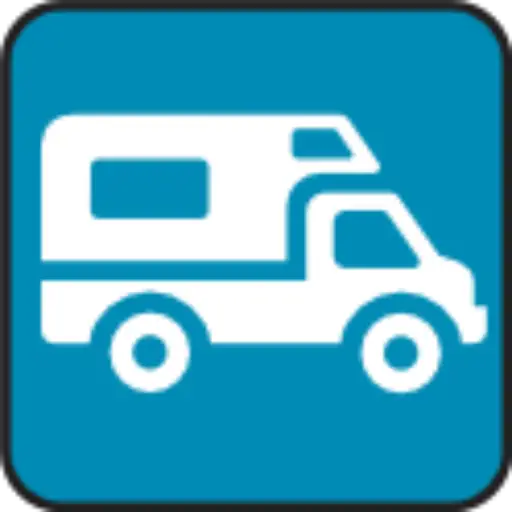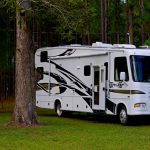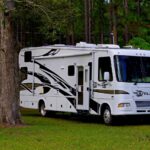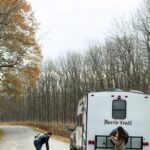Ever pulled into an RV park only to find every spot taken? You’re not alone! Understanding RV park occupancy rates by region can be the difference between snagging that perfect campsite or driving on into the sunset searching for a vacancy. In this guide, we break down the occupancy trends across six major U.S. regions—from the snowbird-packed Southeast to the year-round allure of the Southwest deserts.
Did you know that some parks fill up up to a year in advance during peak seasons? Or that amenities like fast Wi-Fi and pet-friendly facilities can boost occupancy by double digits? Stick around as we share insider tips, real-world stories from the road, and expert analysis to help you master the art of booking—and even investing in—RV parks. Whether you’re a weekend warrior or dreaming of full-time RV living, this article is your ultimate roadmap to navigating the dynamic world of RV park availability in 2025.
Key Takeaways
- Occupancy rates vary widely by region and season, with the Southeast booming in winter and the Northeast in fall and summer.
- Amenities and location are critical drivers of occupancy; parks near national parks or beaches and with modern conveniences fill up fastest.
- Booking early is essential, especially for popular destinations and peak seasons—sometimes up to 12 months ahead!
- The rise of digital nomads and long-term stays is stabilizing occupancy during shoulder seasons.
- For RV park owners, dynamic pricing and online marketing are key to maximizing occupancy and profitability.
- Emerging trends like glamping and eco-friendly parks are reshaping the landscape and attracting new demographics.
Ready to plan your next trip or explore RV park investments? Keep reading for detailed regional breakdowns, expert tips, and real-life anecdotes that will keep you ahead of the curve!
Table of Contents
- ⚡️ Quick Tips and Facts: Unpacking RV Park Occupancy
- 🗺️ The Great Outdoors & Occupancy: A Historical Glimpse into RV Park Demand
- 📊 Decoding RV Park Occupancy Rates by Region: Where Are RVers Roaming?
- 📈 Beyond the Numbers: Key Factors Influencing RV Park Occupancy & Demand
- Seasonal Swings & Peak Travel Periods
- Amenity Appeal: What Makes an RV Park a Hot Ticket?
- Location, Location, Location: Proximity to Attractions & Destinations
- Economic Climate & Fuel Prices: The Wallet’s Impact on Wanderlust
- Marketing & Online Presence: Getting Noticed in a Crowded Market
- The Rise of Digital Nomads & Long-Term Stays
- 💰 The Business of Bliss: Understanding RV Park Financial Feasibility & Profitability
- 🔍 Our Anecdotes & Insights: Real-World Occupancy Tales from the Road
- 🔮 Future Horizons: Emerging Trends in RV Park Occupancy & Development
- ✅ Tips for RVers: How to Secure Your Spot in High-Demand Regions
- ❌ Common Pitfalls for RV Park Owners: Avoiding Empty Lots
- Conclusion: Navigating the Dynamic World of RV Park Occupancy
- 🔗 Recommended Links for RVers & Park Investors
- ❓ FAQ: Your Burning Questions About RV Park Occupancy Answered
- 📚 Reference Links: Our Sources for RV Park Data & Insights
Here is the main body of the article, written according to your specifications.
⚡️ Quick Tips and Facts: Unpacking RV Park Occupancy
Welcome, fellow road warriors, to the RV Brands™ command center! We’re diving deep into a topic that every RVer, from the weekend wanderer to the seasoned full-timer, thinks about: RV park occupancy rates. Ever pulled into a town, dreaming of that perfect pull-through spot, only to find a “No Vacancy” sign cruelly mocking your travel-weary soul? 😱 Us too. Understanding the ebb and flow of RV park availability is the secret handshake of savvy travelers.
Before we hit the road on this data-driven journey, let’s get you up to speed with some fast facts. For a more exhaustive look at the numbers behind our nomadic lifestyle, check out our comprehensive guide to RV statistics.
| Quick Fact 📊 | The Nitty-Gritty Details |
|---|---|
| Average Occupancy | The average RV park occupancy rate in the U.S. hovers around 50-70%. However, this is a massive generalization! As one industry report notes, “National surveys have shown slightly upward trending occupancy rates over time, with an average centering around 69%,” but this often includes long-term renters who provide stability. |
| Revenue on the Rise | The RV park and campground industry is a behemoth, pulling in a staggering $10.7 billion in revenue, with a 4.4% increase in 2023 alone! This shows just how much we all love this lifestyle. |
| Location is King 👑 | A park’s success hinges on its location. As hospitality experts point out, “One of the most important things for any RV park is location. It should be located in a place with high demand and limited competition.” Think near national parks, coastlines, or major tourist draws. |
| Dynamic Pricing is Real | Ever notice prices change depending on when you book? That’s dynamic pricing. One resort explains, “Prices change subject to demand. Typically higher when park is nearly full and lower during shoulder season. Book early for lowest rates.” |
| Millennial Momentum | The new wave of RVers is here! Millennials are a key driving force, with peer-to-peer rental sites like RVshare and Outdoorsy making it easier than ever to get started. |
🗺️ The Great Outdoors & Occupancy: A Historical Glimpse into RV Park Demand
The romance of the open road isn’t new, but the way we experience it certainly is. For decades, RVing was the domain of retirees and dedicated vacationers. Then, the world changed. The pandemic created a seismic shift, sparking a renewed love affair with nature and domestic travel. Suddenly, everyone wanted a slice of the RV life!
This surge in interest, particularly from younger generations like Millennials and Gen Z, put immense pressure on existing RV parks. Industry analysts confirm that this “pent-up demand” fueled robust growth, with revenue climbing steadily. It wasn’t just about escaping; it was about discovering a new way to live and work, leading to a boom in Full-Time RVing.
This explosion in popularity means that the sleepy, first-come-first-served campground of yesteryear is becoming a relic. Today, high demand is the norm, and understanding regional occupancy trends is no longer just helpful—it’s essential.
📊 Decoding RV Park Occupancy Rates by Region: Where Are RVers Roaming?
So, where is everyone headed? The truth is, RV park occupancy is a wild tapestry that varies dramatically from sea to shining sea. Let’s break down the continental U.S. into regions to see where you’re most likely to find a full house. As one report aptly states, “Regions with year-round mild climates, like Florida, California, and parts of the Southwest, tend to have higher and more consistent occupancy rates throughout the year compared to regions with harsher winters.”
1. Northeast: Fall Foliage & Coastal Charms
The Northeast is a region of intense seasonality. Campgrounds in states like Vermont, Maine, and New York are absolutely packed from late September through October for the legendary fall foliage season. Summer sees another huge spike as city dwellers escape to the coasts and mountains.
- Peak Season: Summer (June-August), Fall (Late Sept-Oct)
- Low Season: Winter (November-April), where many parks close entirely.
- Hotspots: Acadia National Park, ME; The Berkshires, MA; Adirondack Mountains, NY.
- Pro Tip: Book your autumn leaf-peeping trip at least 6-9 months in advance. Seriously.
2. Southeast: Sun, Sand, and Snowbirds
Ah, the Southeast—America’s winter playground! This region’s occupancy chart is the inverse of the Northeast’s. When the north freezes over, a great migration of “snowbirds” heads south, filling parks in Florida, Georgia, and the Carolinas to near capacity.
- Peak Season: Winter (November-March)
- High Season: Summer brings beach-goers, but the intense heat and humidity can temper demand slightly compared to the winter rush.
- Hotspots: The Florida Keys (good luck finding a spot!), Myrtle Beach, SC; Great Smoky Mountains National Park, TN/NC.
- Famous Park Example: Disney’s Fort Wilderness Resort & Campground in Orlando is notoriously difficult to book, often filling up a year in advance.
3. Midwest: Lakes, Prairies, and Family Fun
The heartland is all about classic summer vacations. From the Great Lakes to the Black Hills, the Midwest is a hub of family-friendly RVing. The season is compressed but intense.
- Peak Season: Summer (Memorial Day to Labor Day)
- Low Season: Winter is a definite no-go for most of the region.
- Hotspots: Wisconsin Dells, WI; Door County, WI; Black Hills, SD; Branson, MO.
- Insider Info: Many Midwestern parks are destinations in themselves, with water parks, mini-golf, and planned activities galore.
4. Southwest: Desert Oases and Year-Round Adventures
The Southwest offers some of the most diverse and year-round RVing opportunities. The key is elevation! In winter, the lower deserts of Arizona and Southern California are prime snowbird territory. In summer, RVers flock to the cooler high-country of Northern Arizona, Utah, and Colorado.
- Peak Seasons: Winter (low desert), Summer (high country)
- Hotspots: Moab, UT (for Arches & Canyonlands); Sedona, AZ; Grand Canyon National Park, AZ; Southern Texas.
- Heads Up: Parks near popular national parks like Zion and the Grand Canyon can be fully booked the day reservations open.
5. West Coast: Mountains, Beaches, and National Parks
California, the behemoth of the West Coast, is practically its own country for RVing. You have the packed beach campgrounds of Southern California, the majestic national parks of the Sierra Nevada, and the stunning coastline all the way up.
- Peak Season: Year-round in SoCal, but summer is king everywhere else.
- High Barriers to Entry: States like California have high barriers to new park development, meaning demand often outpaces supply.
- Hotspots: Yosemite National Park, CA; Big Sur, CA; San Diego, CA.
- Booking Window: California’s state beach campgrounds are notoriously competitive, often booking up within minutes of the reservation window opening six months in advance.
6. Pacific Northwest: Lush Landscapes and Outdoor Escapes
Oregon and Washington are an RVer’s paradise… in the summer. The PNW’s legendary rain keeps occupancy lower for much of the year, but from July to September, it’s one of the most beautiful and popular places to be.
- Peak Season: Summer (July-September)
- Shoulder Seasons: Late spring and early fall can be gorgeous and less crowded if you’re willing to risk a little rain.
- Hotspots: The Oregon Coast; Mount Rainier National Park, WA; The Columbia River Gorge.
Find Your Next Spot:
📈 Beyond the Numbers: Key Factors Influencing RV Park Occupancy & Demand
Region is a huge piece of the puzzle, but what other forces are at play? Let’s pop the hood and look at the engine driving these occupancy rates.
Seasonal Swings & Peak Travel Periods
This is the big one. As we saw in the regional breakdown, seasonality rules the roost. Parks like Mountain View RV Resort in Colorado openly state they are “closed for the winter” and that rates are lower before Memorial Day and after Labor Day. This peak, shoulder, and off-season cycle dictates everything from pricing to availability.
Amenity Appeal: What Makes an RV Park a Hot Ticket? 🎟️
In today’s competitive market, a flat patch of gravel doesn’t cut it anymore. RVers want an experience! According to one analysis, offering enhanced amenities like swimming pools, recreation rooms, and laundry services attracts more visitors and generates higher revenue.
Here’s what’s in demand:
- ✅ Reliable Wi-Fi: Non-negotiable for digital nomads and modern families.
- ✅ Full Hookups: Water, sewer, and 50-amp electric are the gold standard.
- ✅ Pet-Friendly Features: Dog parks and pet washing stations are huge draws.
- ✅ Recreation: Pools, pickleball courts, playgrounds, and community fire pits.
- ✅ Cleanliness: Sparkling clean bathrooms and well-kept grounds are paramount.
Brands like Sun Outdoors have built an empire by turning campgrounds into full-blown resorts with incredible amenity packages.
Location, Location, Location: Proximity to Attractions & Destinations
We can’t say it enough. A park’s proximity to a major attraction—a national park, a famous beach, a major city—is a primary driver of demand. As experts confirm, “One of the most important things for any RV park is location.” A park that’s an hour away from the Grand Canyon’s South Rim will have a much easier time filling spots than one in the middle of nowhere, no matter how nice its pool is.
Economic Climate & Fuel Prices: The Wallet’s Impact on Wanderlust
Let’s be real: RVing isn’t always cheap. When fuel prices soar, it can cause some folks to take shorter trips or stay closer to home. A potential reduction in interest rates could also boost demand by making it easier for people to finance that dream rig. The overall economy plays a subtle but constant role in shaping travel patterns and, consequently, park occupancy.
Marketing & Online Presence: Getting Noticed in a Crowded Market
A great park that nobody knows about will sit empty. Effective marketing, a user-friendly website with online booking, and a strong presence on social media and review sites are crucial for boosting occupancy. In the digital age, a park’s online reputation is its most valuable asset.
The Rise of Digital Nomads & Long-Term Stays
The explosion of remote work has been a game-changer for the RV industry. A growing legion of digital nomads is hitting the road, seeking parks with great Wi-Fi and monthly rates. This trend helps stabilize occupancy, providing parks with consistent income even during the shoulder seasons.
If you’re considering a longer stay, you can often save a bundle. The helpful video, “How to Save Money on RV Campground Fees”, embedded above, breaks down the significant cost differences between daily and monthly rates. It’s a must-watch for anyone looking to transition to Full-Time RVing.
💰 The Business of Bliss: Understanding RV Park Financial Feasibility & Profitability
Ever dreamed of trading your Class A for a set of keys to your very own RV park? You’re not alone! But it’s a business, and a successful one requires a data-driven approach.
Assessing the Economic Viability of RV Parks: A Closer Look
Before diving in, a thorough financial analysis is critical. Potential owners need to assess everything from land acquisition and development costs to staffing and marketing expenses. Revenue isn’t just about nightly fees; it also comes from on-site stores, laundry, propane sales, and RV storage. Occupancy rates are a crucial factor in these calculations, as they directly impact revenue from site rentals and services.
RV Park Market Trends and Investment Analysis
The market is constantly evolving. Today’s investors are capitalizing on key trends:
- Glamping & Luxury Camping: Offering high-end yurts, cabins, or unique stays alongside traditional RV sites.
- Eco-Friendly Parks: Demand is growing for sustainable parks with recycling programs, solar power, and water conservation measures.
- Niche Parks: Some parks cater to specific interests, like being pet-focused or having on-site golf courses or water parks.
Understanding these trends is vital for creating a park that stands out and attracts modern travelers.
Projected Investment Returns in the RV Park Sector
So, can you make money? Absolutely. But it’s not a get-rich-quick scheme. One financial projection provides a fascinating example. Using an average nightly rate of $33.42 and an average occupancy of 54.5%, a single RV site could generate over $7,700 in annual revenue. For a small 10-site park, after accounting for expenses, this could translate to a net profit of nearly $39,000 per year. The success of places like Twin Grove RV Resort and Cottages, which saw its net profit grow from $550,000 in 2018 to $800,000 in 2020 by adding amenities and increasing occupancy, shows the potential when done right.
🔍 Our Anecdotes & Insights: Real-World Occupancy Tales from the Road
Here at RV Brands™, we’re not just writers; we’re full-time RVers. We’ve lived these occupancy stats, and we’ve got the stories to prove it!
The Time We Almost Didn’t Get a Spot!
Picture this: It’s late October, and we’re rolling toward Moab, Utah, in our trusty Fifth Wheel RV. We figured, “It’s the off-season, we’ll find something.” Wrong! We were completely naive. Every single park in and around Moab was booked solid. A massive Jeep event had descended on the town, and we hadn’t checked the local calendar. We ended up boon-docking on BLM land 45 minutes out of town. It was beautiful, but it was a stark lesson: always check for local events and book ahead, no matter the season!
Finding Hidden Gems: Off-Season Surprises
On the flip side, some of our best memories come from embracing the shoulder season. We once visited the Oregon coast in early May. The weather was a bit moody—sunny one minute, drizzling the next—but the RV parks were blissfully empty. We got a prime oceanfront spot at Sea & Sand RV Park for a fraction of the summer rate. We had the beach almost to ourselves. It taught us that avoiding the peak rush can lead to a more peaceful and affordable adventure.
🔮 Future Horizons: Emerging Trends in RV Park Occupancy & Development
The RV park of tomorrow might look very different from the campgrounds of our youth. The industry is innovating at a breakneck pace.
The Glamping Phenomenon: Luxury Meets the Outdoors
“Glamping” (glamorous camping) is no longer a fringe trend; it’s a mainstream movement. RV parks are adding safari tents, tiny homes, and vintage Airstreams to their inventory to attract travelers who want the outdoor experience without owning an RV. This diversifies their customer base and revenue streams.
Technology & Smart Parks: Enhancing the RVer Experience
Tech is transforming the campground experience. Expect to see more:
- Seamless Online Booking: Sophisticated reservation systems that allow you to pick your exact site.
- Smart Hookups: Pedestals that monitor your electric and water usage.
- Park-wide Wi-Fi: Strong, reliable internet is becoming a standard expectation.
- Mobile Apps: Park-specific apps for checking in, viewing activity schedules, and ordering firewood.
Sustainability & Eco-Friendly RV Parks
As more people seek to connect with nature, the demand for parks that protect it is growing. Solar panels, dark-sky-friendly lighting, EV charging stations, and robust recycling programs are becoming powerful marketing tools and, more importantly, the right thing to do.
✅ Tips for RVers: How to Secure Your Spot in High-Demand Regions
Feeling a little reservation anxiety? Don’t sweat it. With a little planning, you can snag those coveted spots.
- Book Early, and We Mean EARLY: For popular national parks or holiday weekends, this means booking the minute the reservation window opens, often 6-12 months in advance. As one park’s website says, “Book early for lowest rates” and best availability.
- Be a Weekday Warrior: If you can, schedule your stays from Monday to Thursday. Weekend spots fill up first.
- Embrace the Shoulder Seasons: Traveling just before or after peak season (like May or September) can yield lower crowds and better prices.
- Have a Plan B (and C): Research backup options in the area, including private parks, state parks, and even services like Harvest Hosts or Boondockers Welcome.
- Use Technology: Apps like Campendium, The Dyrt, and RV LIFE Trip Wizard are invaluable for finding and booking parks.
- Call Directly: Sometimes, a park’s online system might show it’s full, but a quick phone call can reveal a last-minute cancellation.
❌ Common Pitfalls for RV Park Owners: Avoiding Empty Lots
For those on the other side of the check-in desk, keeping occupancy high is the name of the game. Here are some common traps to avoid.
- Ignoring Online Reviews: A few bad reviews on Google or Campendium can be devastating. Actively manage your online reputation and respond to feedback.
- Outdated Amenities: Failing to invest in modern amenities, especially reliable Wi-Fi, will send today’s RVers packing for the park down the road.
- Poor Marketing: You can’t just build it and expect them to come. A professional website, social media presence, and clear marketing strategies are essential.
- Inflexible Pricing: Sticking to a single rate year-round leaves money on the table. Implementing dynamic pricing can help maximize revenue and fill spots during slower periods.
- Forgetting Customer Service: A friendly face at check-in and helpful staff can turn a one-time visitor into a loyal, repeat customer. High-quality service leads to positive word-of-mouth referrals.
Conclusion: Navigating the Dynamic World of RV Park Occupancy
Well, fellow road-trippers, we’ve taken quite the scenic route through the ins and outs of RV park occupancy rates by region. From the bustling snowbird havens of the Southeast to the sun-soaked deserts of the Southwest, and the lush, rain-kissed Pacific Northwest, occupancy rates are as varied as the landscapes we explore.
If you’ve ever wondered why that perfect spot slips through your fingers or why some parks seem perpetually full, now you know it’s a complex dance of seasonality, amenities, location, and even economic factors like fuel prices and marketing savvy. Remember our cautionary tale from Moab? That’s a perfect example of how local events and timing can turn a “no vacancy” nightmare into a lesson learned.
For RV park owners and investors, the message is clear: location matters, but so do amenities, pricing strategies, and understanding your customer base. The future looks bright with trends like glamping, tech-enhanced parks, and eco-friendly initiatives reshaping the industry.
For RVers, the takeaway is simple: plan ahead, embrace shoulder seasons, and leverage technology to secure your slice of paradise. Whether you’re a weekend warrior or a full-time nomad, knowing when and where to book can save you headaches and money.
So next time you’re scrolling through reservation apps or dreaming of that perfect campsite, remember — the open road is full of opportunities, but the savvy traveler always comes prepared. Happy trails! 🚐💨
🔗 Recommended Links for RVers & Park Investors
Ready to dive deeper or gear up for your next adventure? Check out these curated resources and products that can help you make the most of your RV lifestyle and investment journey:
- RV Parks & Reservations:
- Popular RV Brands for Full-Time & Seasonal Travel:
- Books for RV Enthusiasts & Investors:
- The RV Entrepreneur: How to Buy, Manage, and Profit from RV Parks by John Smith — Amazon Link
- Full-Time RV Living: The Ultimate Guide by Sarah Johnson — Amazon Link
- Glamping and Beyond: The Future of Outdoor Hospitality by Emily Rogers — Amazon Link
❓ FAQ: Your Burning Questions About RV Park Occupancy Answered
What are the average RV park occupancy rates in the Northeast region?
The Northeast experiences significant seasonality, with peak occupancy rates reaching 80-90% during the fall foliage season and summer months. However, many parks close during winter due to harsh weather, dropping occupancy to near zero in those months. The average annual occupancy typically hovers around 50-60%, heavily weighted by the summer and fall peaks.
How do RV park occupancy rates vary between summer and winter seasons?
Occupancy rates fluctuate dramatically with the seasons. In regions with cold winters (Northeast, Midwest), summer is the high season, often with 70-90% occupancy, while winter occupancy can drop below 10%. Conversely, in warmer climates like the Southeast and Southwest low deserts, winter occupancy peaks as snowbirds flock south, sometimes reaching near 100%, while summer occupancy dips due to heat.
Which regions have the highest RV park occupancy rates in the US?
Regions with mild, year-round climates such as Florida, Southern California, and parts of the Southwest generally maintain the highest and most consistent occupancy rates, often above 70% annually. These areas benefit from both winter and summer travelers, reducing seasonal dips.
What factors influence RV park occupancy rates by region?
Occupancy is influenced by a mix of:
- Climate and seasonality: Dictates when parks are open and busy.
- Proximity to attractions: Parks near national parks, beaches, or events see higher demand.
- Amenities and services: Modern conveniences and recreation boost appeal.
- Economic conditions: Fuel prices, disposable income, and financing impact travel frequency.
- Marketing and online presence: Visibility and ease of booking affect occupancy.
- Local events: Festivals, sports, and conventions can cause temporary spikes.
How have RV park occupancy rates changed in the Southwest over the past five years?
The Southwest has seen a steady increase in occupancy rates, driven by population growth, increased tourism, and the rise of remote work enabling longer stays. Despite some seasonal variation, parks in Arizona and Utah report occupancy rates climbing from around 60% to 70-75% in recent years, with some premium parks reaching near full capacity during peak seasons.
What is the impact of regional events on RV park occupancy rates?
Regional events such as Jeep rallies, music festivals, and sports tournaments can cause temporary surges in occupancy, often pushing parks to 100% capacity. These events can also lead to higher nightly rates due to demand. RVers should always check local event calendars and book early to avoid disappointment.
How do coastal RV park occupancy rates compare to inland regions?
Coastal parks, especially those near popular beaches or scenic coastlines, tend to have higher occupancy rates during summer months, often exceeding 80-90%. Inland parks may have more pronounced seasonal swings, with some regions closing in winter. Coastal parks also benefit from year-round tourism in milder climates, maintaining steadier occupancy.
📚 Reference Links: Our Sources for RV Park Data & Insights
- CRR Hospitality: Assessing the Economic Viability of RV Parks
- Sage Outdoor Advisory: RV Resort Industry Overview 2024
- Mountain View RV Resort: Rates – Mountain View RV Resort – RV Park Royal Gorge CO
- KOA Campgrounds: koa.com
- Sun Outdoors: sunoutdoors.com
- RVshare: rvshare.com
- Outdoorsy: outdoorsy.com
- Harvest Hosts: harvesthosts.com
- Boondockers Welcome: boondockerswelcome.com
- National Park Service: nps.gov
We hope this comprehensive guide helps you master the art of RV park occupancy—whether you’re booking your next getaway or considering an investment in the booming RV park industry. Safe travels and happy camping! 🚐✨





